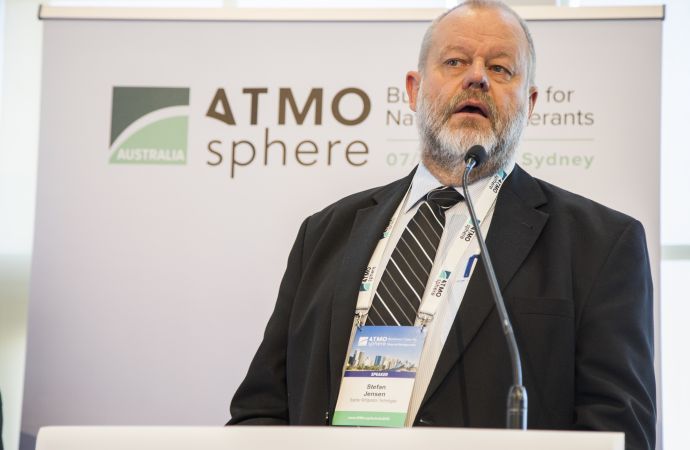Direct satellite observations of the ozone hole measured by researchers have shown that atmospheric levels of chlorine – a breakdown product of CFCs – are declining.

A view of Earth's atmosphere from space.
Credits: NASA
Through direct satellite observations of the ozone hole, scientists have shown for the first time that atmospheric levels of ozone-destroying chlorine are declining, resulting in less ozone depletion.
Chlorofluorocarbons (CFCs), which contain the ozone-depleting chemicals chlorine and bromine, used to be in everything from hairsprays to refrigerators and air conditioning units before the Montreal Protocol placed a global ban on CFCs in 1987.
This ban, and the subsequent decline of chlorine in the atmosphere, has resulted in 20% less ozone depletion during the Antarctic winter than “there was in 2005 — the first year that measurements of chlorine and ozone during the Antarctic winter were made by NASA’s Aura satellite,” according to a study released by NASA in Geophysical Research Letters last week.
We see very clearly that chlorine from CFCs is going down in the ozone hole, and that less ozone depletion is occurring because of it.”
– Susan Strahan, NASA
“We see very clearly that chlorine from CFCs is going down in the ozone hole, and that less ozone depletion is occurring because of it,” said lead author Susan Strahan, an atmospheric scientist from NASA’s Goddard Space Flight Center in Greenbelt, Maryland.
Past studies, reported by this website, have demonstrated that the ozone hole is getting smaller.
The new study, according to NASA, is the first one to measure, “the chemical composition inside the ozone hole to confirm that not only is ozone depletion decreasing, but that the decrease is caused by the decline in CFCs”.
The hole, over the Antarctic, forms during the Southern Hemisphere’s winter in September as the sun’s rays catalyse the ozone-depleting cycles of CFC molecules chlorine and bromine.
To see if this was changing, scientists from NASA used the Microwave Limb Sounder (MLS) aboard the Aura satellite (a multinational NASA scientific research satellite in orbit around the Earth), which measures microwave emissions, to get reliable data from the stratosphere.
Ozone level changes, from 2005 to 2016, were computed daily from the MLS measurements between early July and mid-September.
“During this period, Antarctic temperatures are always very low, so the rate of ozone destruction depends mostly on how much chlorine there is,” Strahan adds. “This is when we want to measure ozone loss.”
They then discovered that the ozone hole was decreasing in size, but further investigation was required to determine whether the ban on CFCs was responsible for this.
When the ozone depletion reaction occurs, chlorine cannot be measured but “after chlorine has destroyed nearly all the available ozone, it reacts instead with methane to form hydrochloric acid, a gas measured by MLS,” according to NASA.
“By around mid-October, all the chlorine compounds are conveniently converted into one gas, so by measuring hydrochloric acid, we have a good measurement of the total chlorine,” Strahan said.
Ozone depletion has now been confirmed by the MLS ozone measurements to have decreased by 20% between 2005 to 2016.
“This is very close to what our model predicts we should see for this amount of chlorine decline,” Strahan said. “This gives us confidence that the decrease in ozone depletion through mid-September shown by MLS data is due to declining levels of chlorine coming from CFCs. But we’re not yet seeing a clear decrease in the size of the ozone hole because that’s controlled mainly by temperature after mid-September, which varies a lot from year to year.”
Total healing of the ozone layer will still take decades. “CFCs have lifetimes from 50 to 100 years, so they linger in the atmosphere for a very long time,” said Anne Douglass, a fellow atmospheric scientist at Goddard and the study’s co-author. “As far as the ozone hole being gone, we’re looking at 2060 or 2080. And even then, there might still be a small hole.”
Related stories



